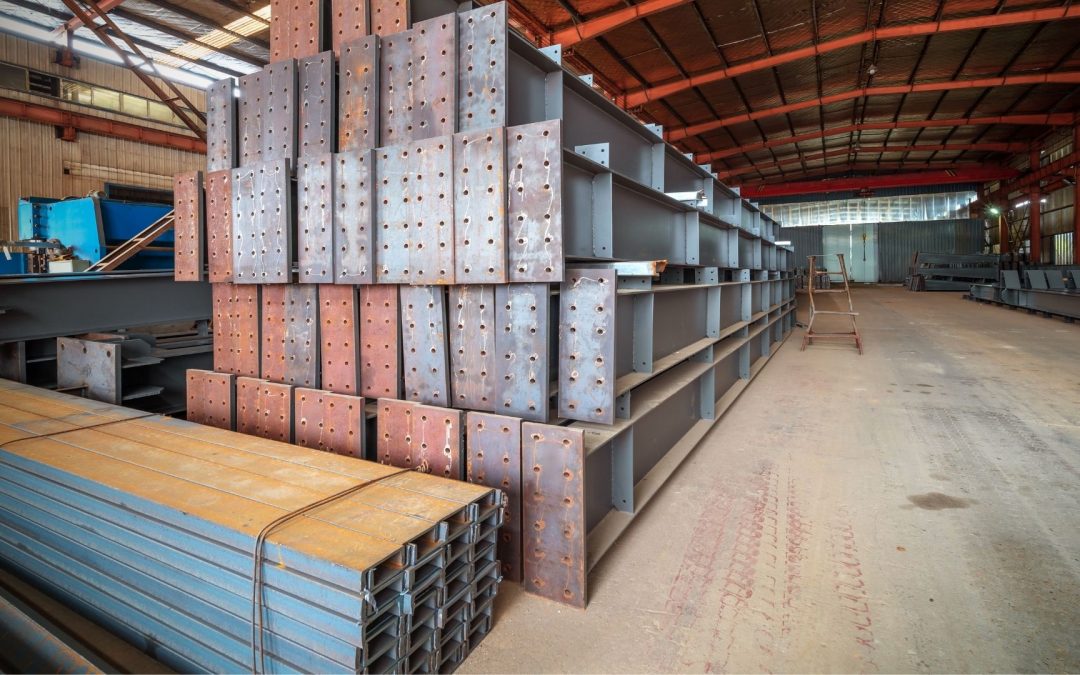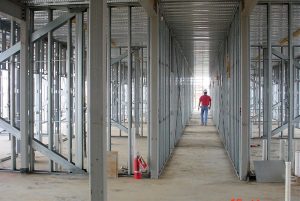You’ve heard us talk about the benefits of cold formed steel but the real question is, how does it measure up against standard, structural steel? What’s the real difference, anyways? It’s true that both of these are steel but there are some substantial differences you should be aware of.
These are each unique in their own ways and both have advantages and disadvantages to be aware of. In this guide, we will break down the similarities and the differences between cold formed steel and structural steel.
Our goal is that by the end, you will be able to quickly understand each product and maybe even choose a favorite for an upcoming project.
Cold-formed steel and structural steel are both great for strength, affordability, maintenance, and durability. But they, of course, each have different positive qualities for performance and sustainability.
Cold Formed Steel
Cold formed steel doesn’t use any heat to form. It’s pressed and formed “cold” from coils of sheet steel. In other words, during production cold formed products are formed at whatever temperature the current temperature of the room is.
When you hear the term “rolled”, this means that the sheet steel has been formed into the manufacturing product. It is not necessarily rolled into a cylinder, but rather rolled to form the shape it needs to be. The shape of cold formed steel is consistent and uniform every time.
Advantages of Cold Formed Steel
There are numerous advantages to working with cold formed steel. At one time, cold formed steel was considered to only be used for light, curtain-wall or non-load-bearing, framing. However, manufacturing advancements have created propriety members, like SigmaStud®, where additional bends in the web of the stud provide the cold formed steel member to resist higher axial loads. Cold formed steel is more and more frequently being used in load-bearing construction, like hotels and dormitories, where there is a repeating floor plan.
Cold formed steel can be used for nearly anything that structural steel can be used fo,r and it is incredibly effective and efficient. Here are some of the top advantages of cold formed steel.
1. Flexibility
Cold formed steel is flexible and can be formed to represent a large variety of shapes. Depending on the manufacturing effort and production capability, cold formed steel can basically be rolled or pressed into any custom shape. Cold formed steel is commonly used for framing, with cold formed steel studs, tracks and purlins being utilized daily for curtainwall, load bearing, panelized construction, roof trusses, and floor joists.
Cold formed steel is incredibly versatile because you can use it in almost any part of the framing process, regardless of the building size. Designers and installers should also be familiar with the codes, standards, and structural rules for design and install when working with cold formed steel.
2. Simple to Use
Using cold formed steel is simple. You don’t have to cut anything, because the members and tracks are cut to length in manufacturing and made for the specific requirements of the project.
3. Money Saving
Cold formed steel can save you money in the long run. You might find that you save money on insurance costs or you might find that you save money on materials. There is far less waste, which means the overhead of building with cold formed steel is reduced and it is a money-saving material. CFS sustains better to the elements and will last much longer than materials like wood.
Plus, since cold formed steel products arrive on the job cut to length, installer will save a considerable amount of time and labor during the install process.
Structural Steel
Structural steel is similar to cold formed steel in many ways but it also stands apart. It is sturdier and stronger, and has fewer limitations. The biggest difference is that structural steel must be formed using heat, which can complicate the forming process.
Structural steel is also very thick and heavy with rough edges and compilations.
Advantages of Structural Steel
Just as cold formed steel, structural steel has many advantages as well as a few disadvantages. Neither is perfect but remember that both serve an immense purpose.
1. Fewer Limitations
Where cold formed steel is reliable and flexible, it does have some limitations. You have to know how to use it appropriately for managing loads. There are some stringent height limitations when it comes to using CFS as the primary structure, where as structural steel has no such limitation. You will find that some of the tallest buildings in the world used structural steel.
2. Design Potential
Since there are fewer limitations when it comes to height and allowances, there is more space and fewer regulations for placing structural steel. This means that you can open the design a bit in some areas where cold formed steel won’t work.
3. Minimal Waste or Pollution
Structural steel also has little waste or pollution associated. Most steel produced in the U.S. is made of more than 90% recycled materials. The carbon footprint is minimal compared to many other materials.
Conclusion
Cold formed steel is incredibly versatile and lightweight. It is certainly a favored material in many ways, but there are times when structural steel is necessary due to the height restrictions of cold formed steel.
Regardless of your project, steel of any kind is a high-quality and reliable material that delivers results. Be sure to consider all options and gain a thorough understanding of the pros and cons of both materials before you start your next project.



Recent Comments